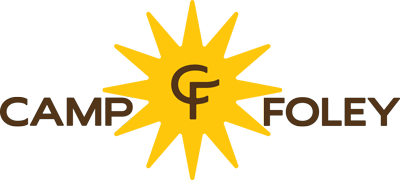Living In A Cabin
What is it like to live in a cabin?
A Message From Quinn, Foley Camper
Guide to a successful cabin experience at Camp Foley
The cabin is one of the most important places at summer camp. It is where campers practice independence, live, sleep and make friends with their peers. The cabin is a camper’s home away from home – and should feel that way!
Create meaningful connections
You get the opportunity to meet and live with other campers from all over the world. Meeting new people is one way to discover new interests, form new friendships, and develop new perspectives.
You will live with 6-10 other campers and 2 or 3 counselors. They will act as your camp “family” for the rest of your time together. Just like a family, you won’t get along 100% of the time, but even that will be good practice! Learning to appreciate people who are different from you comes in handy for things like group projects, moving into a college dorm, and when making new friends throughout your life.
Our hope is that the cabin becomes a place where you can make life-long memories and friends. A place you can call home away from home.
Advocate for yourself
You will have a say in the way your cabin “family” operates during the session. On the first night of camp, you will create a Cabin Agreement, a set of community guidelines for the cabin to live by. Every member of the cabin has an equal say in how the cabin will live for the session. What rules do you want in place to feel safe and supported in your cabin? (examples: Treat everyone the way they want to be treated, ask before sitting on other bunks, keep your area clean, etc.). Your counselors may revisit the agreement throughout the session to give reminders and support the wellbeing of the whole cabin.
If you are struggling to get along with someone in your cabin or feeling unsafe, please let one of the counselors or directors know so that we can support you.
Participate as much as you can
Full participation in all aspects of cabin living and camp life is the best way to have a successful session. We all must work together to create a safe supportive living space that looks after the wellbeing of everyone.
Cabin members are responsible for keeping their personal space, and shared spaces clean in the cabin. You and the rest of your cabin will participate in a short cabin clean up each morning after breakfast. It’s great practice for living on your own someday!
Your cabin participates in many activities and programs together. It is important to remember that you may not have a choice in every single activity or event, but you can choose to try and give it a good effort.. Participating fully, and being flexible, patient, and kind to each other creates a cabin environment everyone will feel welcome in.
Learn to Compromise
It will be almost impossible for your cabin to agree on everything all the time, and that is where compromise comes in. If you have a sibling you already know how important a skill this is. If not, think of camp as a group project or a team sport.
Learning to compromise and accept group decisions is a life skill that helps you navigate many different situations. Knowing how to give up the small battles, like which cubby you and your friend both want to use, or figuring out how to meet in the middle at Evening Program, if half the cabins want to swim, and the others want to play dodgeball is great practice for future conflicts you may need to deal with.
Build Independence
Get ready to build independence! Being away from home can feel uncomfortable at first, but our goal is to help you practice setting goals, taking healthy risks and trying new things. You will get to select which activities you want to try, choose from a list of fun and relaxing things to do during free time and decide how much food you want.
We want you to set realistic goals and give yourself something to work towards. It will be up to you to push yourself to achieve them. Your counselors and cabin mates will be there to support you and celebrate if you complete a goal. Remember that sometimes you may not complete all your goals, and that is great, too. We hope that you learn a lot in the process anyway.
A Note on Cabin Placement
We strive to create cabins of campers that set the stage in forming that “cabin family.” Cabin placements are made based on age and/or school grade, diversity in where campers are from, similar interests, and camping experiences. Mutual requests for cabin mates can be arranged if two campers both request ONLY each other.
It is impossible to guarantee placement with several campers or a group of campers. If a younger camper requests to be with an older camper, there is a strong possibility that the older camper would have to drop down and be in a cabin with the younger grade. If a request is not mutual, Foley will assign campers to their cabins based on other factors. Mutual requests need to be into our office two weeks prior to the start of the session.
Cabin placement is a giant puzzle! Thanks for partnering with us to help create a positive family environment for everyone!
The Cabin Layout

All of our cabins are slightly different, but each is furnished the same. Every camper will have their own bed (usually a bunk bed), shelves or cubbies, and a locker space with hangers to store all their belongings. Outside the cabin are clotheslines for campers to hang wet swimsuits or towels. Each camper’s bunk is assigned by their counselors before they arrive at camp, to encourage campers to meet new people and make new friends!
